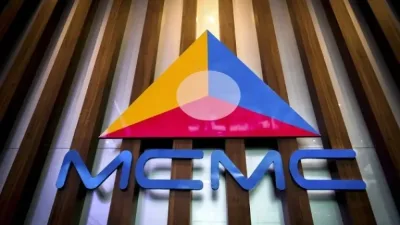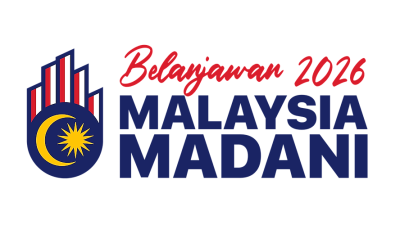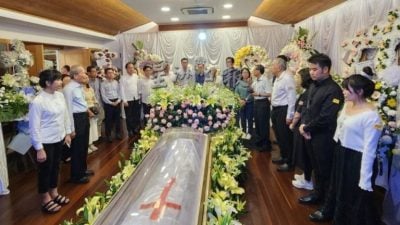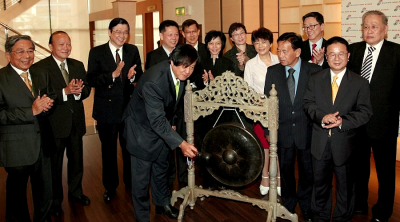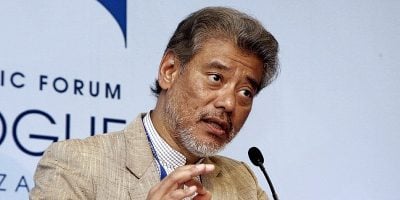
DNB officials still avoid answering the fundamental questions posed to them repeatedly by EMIR Research in the series of six articles. Instead, the entity attempts to bring the discussion level down to the semantic acrobatics while twisting, citing out of context and deliberately misrepresenting EMIR research perspective which is based solely on data, telecom industry specifics, and economics.
Although DNB-Plum Consulting’s joint response (“Should Malaysia abandon its SWN 5G rollout?” on March 3, 2022) attempts to expose a lack of understanding on behalf of EMIR Research on how SWN operates, it instead demonstrated its own inability to read correctly or study the EMIR Research perspective sufficiently.
EMIR Research not only never proposed “that there should be two rather than one wholesale network, with each one run by a consortium of mobile operators”, but it outspokenly opposed both models. This is because data, telecom industry specifics and economics support the notion that Single Wholesale Network (SWN) and Dual Wholesale Networks (DWN) alike lead to a highly undesirable monopolistic effect on the telecom industry leading to low competition and, as a result, low innovation and quality of the internet.
DNB-Plum gets carried away explaining at length how the “DNB approach is different and is not network sharing”, which is pure semantics and totally does not address the key issue that EMIR Research continuously emphasizes. When individual MNOs are not given the freedom to deploy their own active network equipment (and DNB admits “there will be one set of electronics… to carry data between base stations and end-user devices”), we have a big problem—MNOs can no longer compete on the quality of network which is the key differentiating feature and all other features, including differentiation “on retail end” which DNB keeps emphasizing are only secondary to and dependent on the network quality.
Note that GSM Association, in its response to DNB, argumentatively echoes EMIR Research’s concern about this delinking of network ownership from service delivery and its various negative impacts on the industry and end consumers.
For DNB-Plum’s information, EMIR Research is fully aware of and also acknowledged in its writings that under DNB, the core networks will be from a range of equipment suppliers (at least until the implementation of 5G stand-alone solution). However, this does not help the DNB’s argument because no matter how superior equipment you have at the core network level, it can do very little if the active network equipment provides substandard quality and is entirely out of MNO’s control.
At least, intelligently enough, DNB-Plum’s response acknowledges that “DWN would not lead to increased competition, spurring innovation at the infrastructure level” and that under DWN “each consortium is a monopoly provider”. What more SWN?! And in line with the very fundamental economic principle, if there is no competition on the active network infrastructure, there will be no service quality or price reduction.
This is where EMIR Research would like to reiterate the important global experience we absolutely cannot ignore. The unanimously mediocre, at best, performance in terms of network quality and nationwide penetration by all the countries that adopted SWN-model (government-led or MNO consortium-led alike) for their 4G rollout is glaring in comparison with the nations who did not (see “Malaysian 5G Rollout ‘Unanswerable’ Questions“ for case study analysis and data visualization by EMIR Research).
These 4G SWN-adoption cases are failures due to the monopolistic effect and the delinking of network ownership from service delivery! And 5G, due to the specificity of its use cases, especially for enterprise solutions (the most critical segment for Industry 4.0), will require even closer cooperation between network and end-user devices.
Brunei 4G SWN experience and Plum’s quoted rural shared networks in some parts of the world are rather interesting and unique case studies. They are unique in that sense that they cannot be considered out of their important context — a small geographic area with a small population size, and EMIR Research has already emphasized this in its writings, in case Plum has missed it.
Learning from this experience, none of the countries already rolling out the 5G network use the SWN model on a national scale (out of 70 countries thus far as reported by GSM Association, “GSMA responds to Ong Kian Ming’s questions on 5G roll-out” on February 19, 2022). None!
Russia has been initially debating over 5G SWN mainly due to its 5G spectrum scarcity. However, like all the other countries that faced this challenge, Russia has finally decided (later is better than never) to free up the band to be still able to proceed with the beauty contest. This is because spectrum ownership by MNOs is synonymous with the active network equipment ownership by MNOs, which is tightly linked with competition, innovation and quality!
Now, this is the trend, while nationwide SWN is more a dusted fad unless DNB-Plum is trying to redefine the word “trend”.
At the same time, there is also a massive global trend recently towards sharing the passive network infrastructure elements, which EMIR Research, in its writing, have clearly put as the way forward to bring 4G and 5G services to our rural areas. However, as EMIR Research reiterated many times, DNB in its current structure does not address it at all. More so, it keeps avoiding talking about this and the Universal Service Provider fund that would be more than sufficient to address this key problem.
DNB-Plum’s whole passage on supply-driven demand versus demand-driven 5G rollout is another round of advanced semantic acrobatics.
First, they wrongly claim that “Emir Research suggests that there are two approaches to delivering 5G which they term “demand-driven” and “supply-driven”. What EMIR Research consistently emphasized is that precisely what DNB now finally admits itself, with the Plum’s help though,— “all mobile deployment is based on predicted demand”, ok, “an informed variant of being supply-led”, if DNB wants to put it that acrobatically.
At the same time, EMIR Research has never suggested that “5G should be deployed only after the demand for it has emerged”. Instead, EMIR Research has only emphasized that given Malaysia’s level of 5G preparedness, or rather unpreparedness, it makes no sense to rush and push 5G at that grandiose scale as suggested and urged by DNB.
No matter what you call it, technology adoption is critical for the sustainability of the MNOs’ business model. Therefore, all what EMIR Research requested DNB on this front is precisely to substantiate its speculations with solid demand estimates with real figures. Where is the technical needs analysis for 5G in Malaysia’s rural and urban areas? How many citizens or business entities can readily take on 5G as it becomes available? In which areas? And how does this stand vis-à-vis the proposed cost and pricing? Where are all these crucial inputs to inform the efficiency of the DNB’s “informed variant of being supply-led” 5G rollout model?
Also, Emir Research has never argued “that there is little point in deploying 5G now in Malaysia because it lacks the digital skills and ecosystem needed to benefit from the advantages that it brings”.
However, it is a solid fact consistently supported by the global data (see “Malaysian 5G Rollout — Exhibit “A” for Misplaced Solution” on February 10, 2022, for EMIR Research analysis) that to date, Malaysia continues consistently (year-on-year) lose the critical digital skills and ecosystem needed to benefit from the advantages offered by 5G on a large scale. This is why what EMIR Research has said is that adoption of 5G technology is going to be patchy and, at best, enterprise-solution driven and therefore, DNB’s pitch of delivering 80% 5G coverage by the end-2024 makes no economic sense but sounds like a tremendous waste of resources that are direly needed now to fix our other digital elements.
And it is not that “the EMIR Research’s argument is flawed”, but Plum’s assertion is rather simply naïve to think that “all the elements of the ecosystem and digital skills needed” will be delivered and fall in place magically just because we have Malaysia’s Digital Economy Blueprint. Malaysia has never been short of blueprints but extremely poor in implementation, especially of recent. In fact, Malaysia’s Digital Economy Blueprint has been there already for two years. Have we seen any impact on our digital ecosystem for these two years? The data points to the opposite (see “Malaysian 5G Rollout — Exhibit “A” for Misplaced Solution” from February 10, 2022).
Believing that Malaysia’s digital ecosystem will thrive just because we have Malaysia’s Digital Economy Blueprint is akin to another naïve DNB’s assertion “DNB will be properly governed due to the existence of Board of Directors”.
Plum completely ignores EMIR Research’s important emphasis made that there must be independent monitoring (financial, technical etc.) and oversight, given that project costs include sums (reportedly an estimated RM 1 billion) allocated for Malaysian Communications and Multimedia Commission (MCMC), the body regulating DNB, and Tenaga Nasional Berhad (TNB).
TNB’s biggest shareholder is Khazanah Nasional Berhad, owned by the Ministry of Finance Incorporated, while the Ministry of Finance wholly owns DNB.
How will this ecosystem ensure proper good governance and integrity are in place? What are the checks and balances, oversight, and monitoring mechanisms on DNB’s key performance indicators (KPIs), financial, legal, and technical matters? The appointment of the Board of Directors does little (if nothing) as far independent external oversight goes.
Also, TM (Telekom Malaysia) had inked an RM2 billion deal to provide fiber leasing service to DNB. The government’s investment holding arm, Khazanah Nasional Berhad, also has a majority stake in TM.
MCMC is an agency under the Ministry of Communications and Multimedia, thus representing the government and not a “neutral” entity under the whole “government-led” DNB model.
In short, DNB is government-led, with a government-linked ecosystem and beneficiaries. Does Plum Consulting seriously not see a problem in the ecosystem mentioned above to provide sufficient independent oversight?
As for Plum’s statement that comparing DNB’s vulnerable governance structure with 1MDB is a “false comparison”, here are some points for Plum Consulting to digest:
- Malaysia fined Deloitte for breaches linked to 1MDB when it was 1MBD auditor.
- Malaysia central bank, Bank Negara Malaysia (BNM), has allegedly approved an “overnight” foreign exchange transfer of US$1 billion from 1MDB to PetroSaudi International (PSI), after then BNM governor’s husband had reportedly been bribed to “make it happen”. Of course, this is a mere allegation and still an ongoing investigation, but it does reflect weakness in oversight and due diligence by monitoring and regulatory bodies.
- During former prime minister Najib Razak, the former Attorney General exonerated Najib from any wrongdoings.
- In addition, the Malaysian Anti-Corruption Commission, Malaysia’s corruption “frontline agency”, was reported to find nothing wrong with 1MBD dealing in 2016.
Are these not ecosystem actors that were also supposed to monitor and scrutinize 1MBD? Without independence and empowerment of monitoring institutions, how can Plum Consulting assert that “a licensed telecommunications operator with a clearly articulated, detailed, and widely circulated business plan which has been scrutinized by the government, by the mobile operators and by the Communications and Multimedia Commission (MCMC)” and that “[a]s a licensee, just like any other telecommunications operator in Malaysia, DNB will be subject to close scrutiny and extensive regulation by MCMC, an independent regulator established by the MCMC Act. MCMC will monitor DNB’s progress against its plan and regulate the way it supplies wholesale 5G services to mobile operators and mobile virtual network operators (MVNOs) in terms of both price and non-price supply conditions”.
The comparison made is on a similar pattern-like weakness in DNB’s external oversight ecosystem. We kindly ask Plum to clarify how this comparison can be false.
Finally, EMIR Research would like to reinstate the 5G rollout option it favors as DNB-Plum completely misrepresented it.
In EMIR Research’s view, DNB should become the neutral entity that will solely focus on actively expanding passive network infrastructure nationwide—fiber, backhaul and towers/poles only (for 5G, it will be even more massive than what 4G requires). At the same time, the spectrum should be given to individual MNOs in a fair beauty contest, following the global 5G rollout experience (see the study of the top 60 telecoms markets worldwide by The Economist Intelligence Unit).
The regional spectrum sharing with roaming will be a less preferred option (as it will come at the expense of lower competition) and a compromise solution if we target a higher maximum speed.
In conclusion, in its series of articles on Malaysia 5G rollout EMIR Research has presented not “some searching questions about the SWN proposal” but the fundamental questions regarding SWN/DWN suggested by data, industry specifics and economics, which DNB has failed to address until now, including in its recent Plum-assisted response.
Importantly, EMIR Research has loudly called for a professional and transparent evaluation of ALL the alternative models for Malaysia 5G rollout (not just SWN or DWN), including the comparative scenario analysis and regulatory impact analysis covering at least two dimensions — effects on market/industry and cost/benefit associated with every alternative rollout model.
The cost claims must be provided with a detailed breakdown of these costs, verified by experts from DNB, MNOs, and independent bodies, while independent technical experts must verify quality claims.
EMIR Research has not provided this granular analysis yet as it may lack access to all the pertinent information and versatile expertise required. However, EMIR Research would be more than happy to be invited to participate in such an exercise. It is always better to correct the strategic mistake sooner than later and do it right in the first place rather than continue accumulating loses and opportunity costs in catching up with 4IR train.
This kind of extensive and transparent evaluation of all possible 5G rollout models is an absolute requirement for government decisions of this caliber, and it is absolutely baffling how this has not been done until now.
DNB must also be naïve to think that contracting superficial consultancy to conflicted parties hired by the interested party to defend their position, their survival – the DNB itself — can in any manner be sufficient to “conclude” anything!
Last but certainly not least in the context of the amount of money involved, it is simply pathetic how even to provide these naïve, semantic and evasive (not answering the fundamental questions again), unfounded, broad brush stroke responses to EMIR Research or “validity assessment”, only with the validity missing, the DNB had to contract Plum Consultancy. Literally everything appears to be subcontracted by the DNB. This alone should make us all worried and skeptical.
(Dr Rais Hussin is the CEO of EMIR Research, an independent think tank focused on strategic policy recommendations based on rigorous research.)
ADVERTISEMENT
ADVERTISEMENT






